Abstract
1 A procedure for examining the acquisition of a lever-pressing operant with conditioned reinforcement was used to compare the effects of three psychomotor stimulants. 2 Hungry rats were trained to associated and auditory tone (i.e., conditioned reinforcer) with food. Preference for the tone was then measured after treatment with pipradol (5, 10, 15 mg/kg), cocaine (1, 5, 10 mg/kg) or (+)-amphetamine (0.5, 1.5, 5.0 mg/kg). 3 In agreement with previous data, 10 mg/kg of pipradrol enhanced the effect of conditioned reinforcement whereas animals treated with any of the doses of (+)-amphetamine showed no effect. 4 Rats treated with cocaine (1 or 5 mg/kg) showed an effect of conditioned reinforcement but the effect was not significantly greater than in controls. 5 The present data suggest important differences in enhancement of responding for conditioned reinforcement by various drugs in the psychomotor stimulant class. These differences in turn may be related to the pharmacological actions of these compounds on release of catecholamines from different storage pools.
Full text
PDF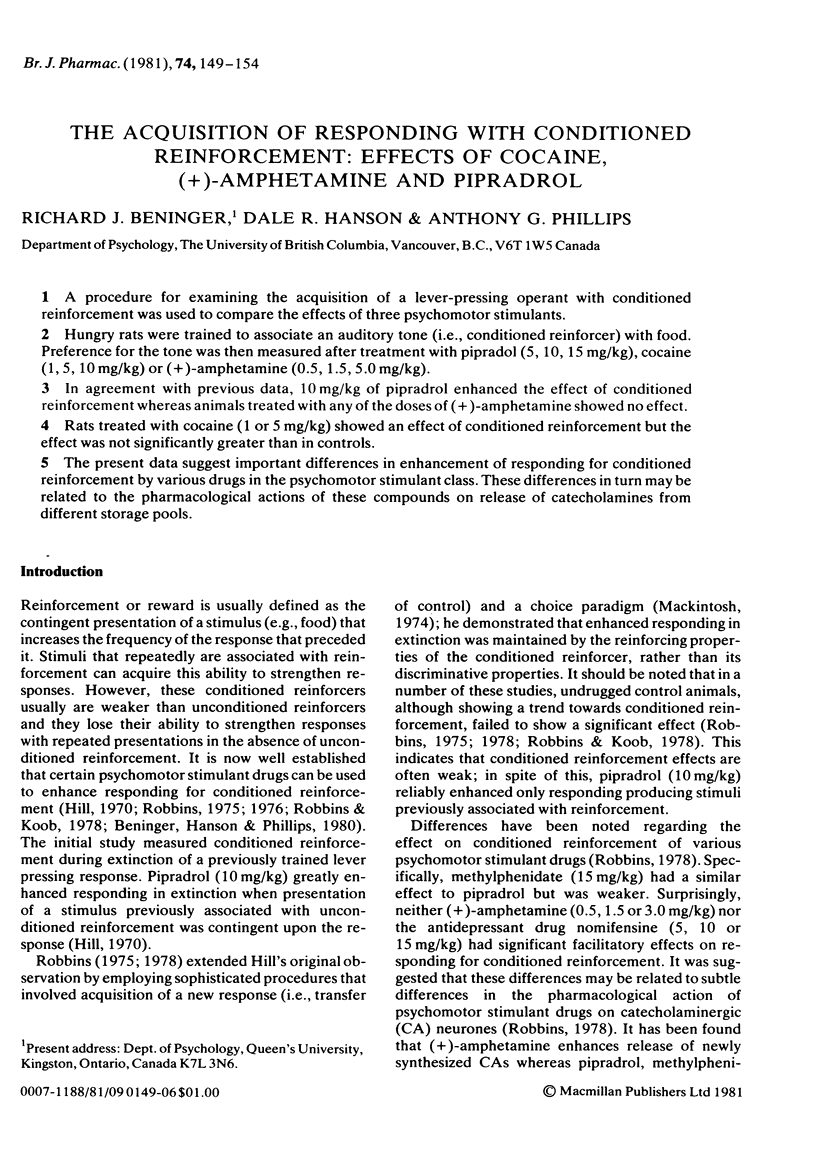
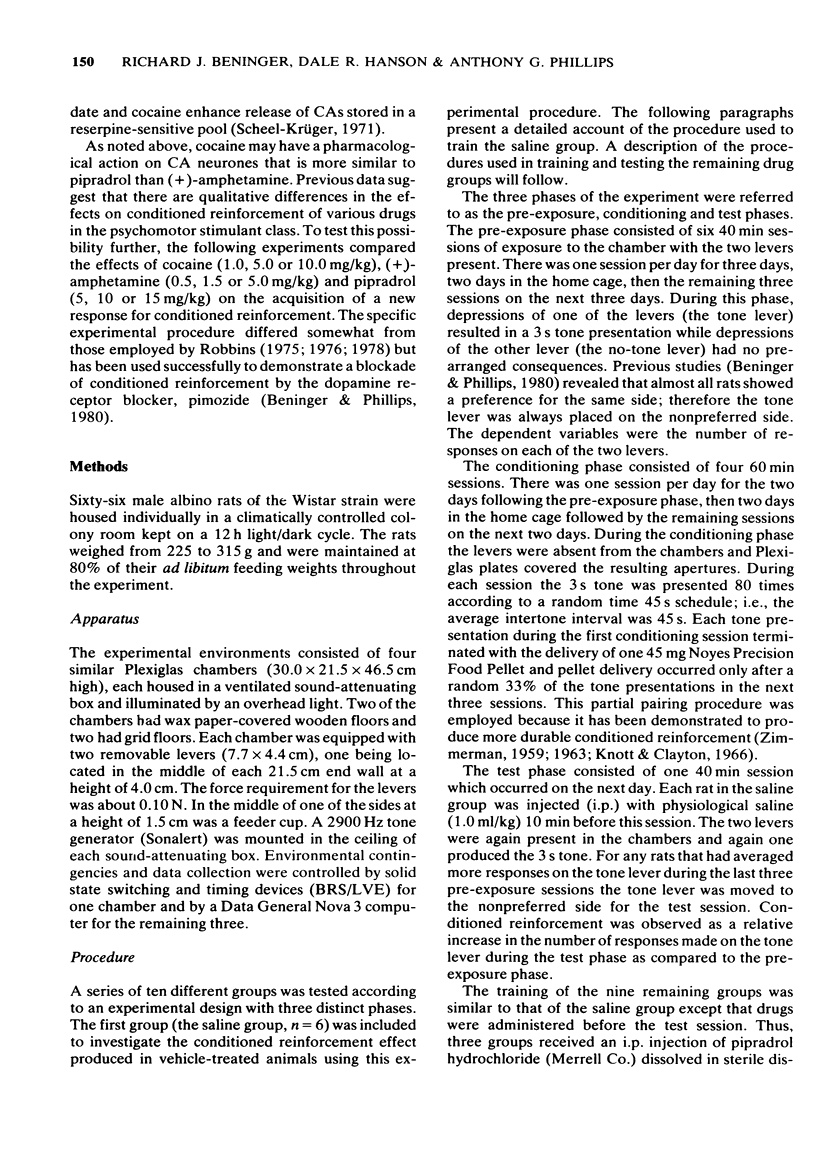
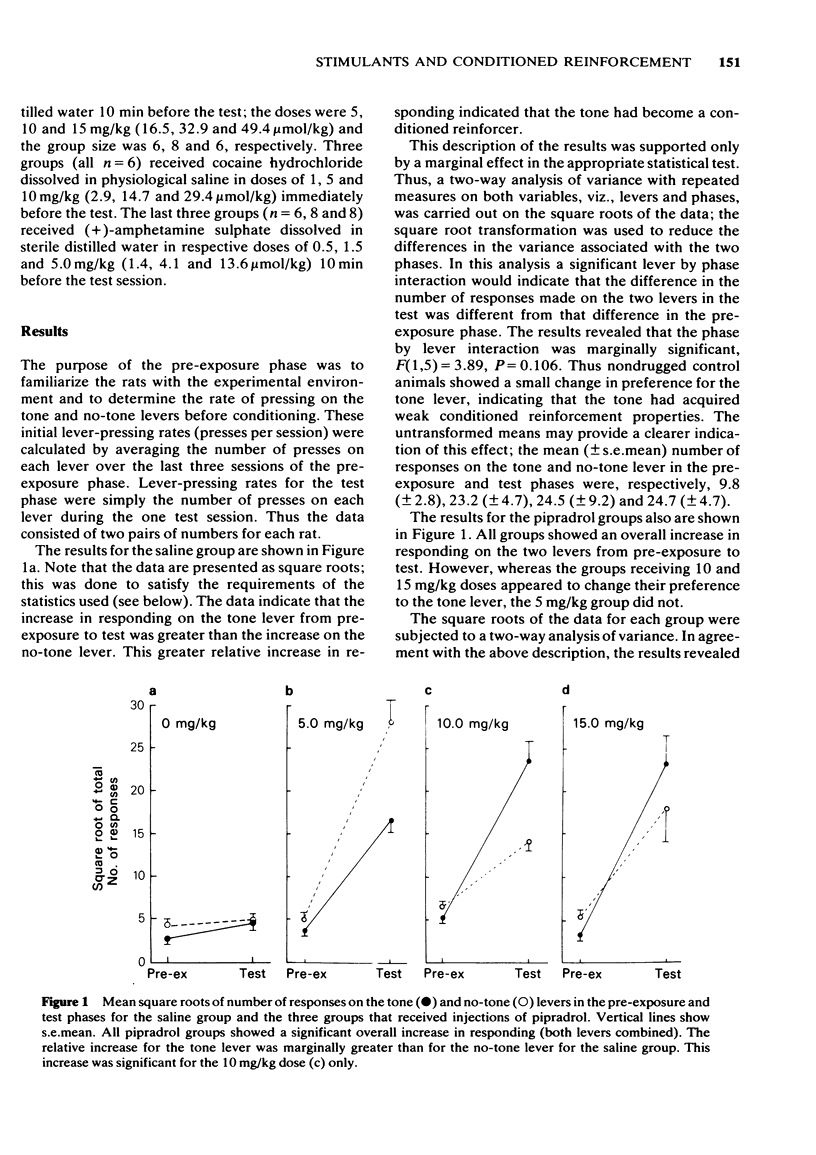
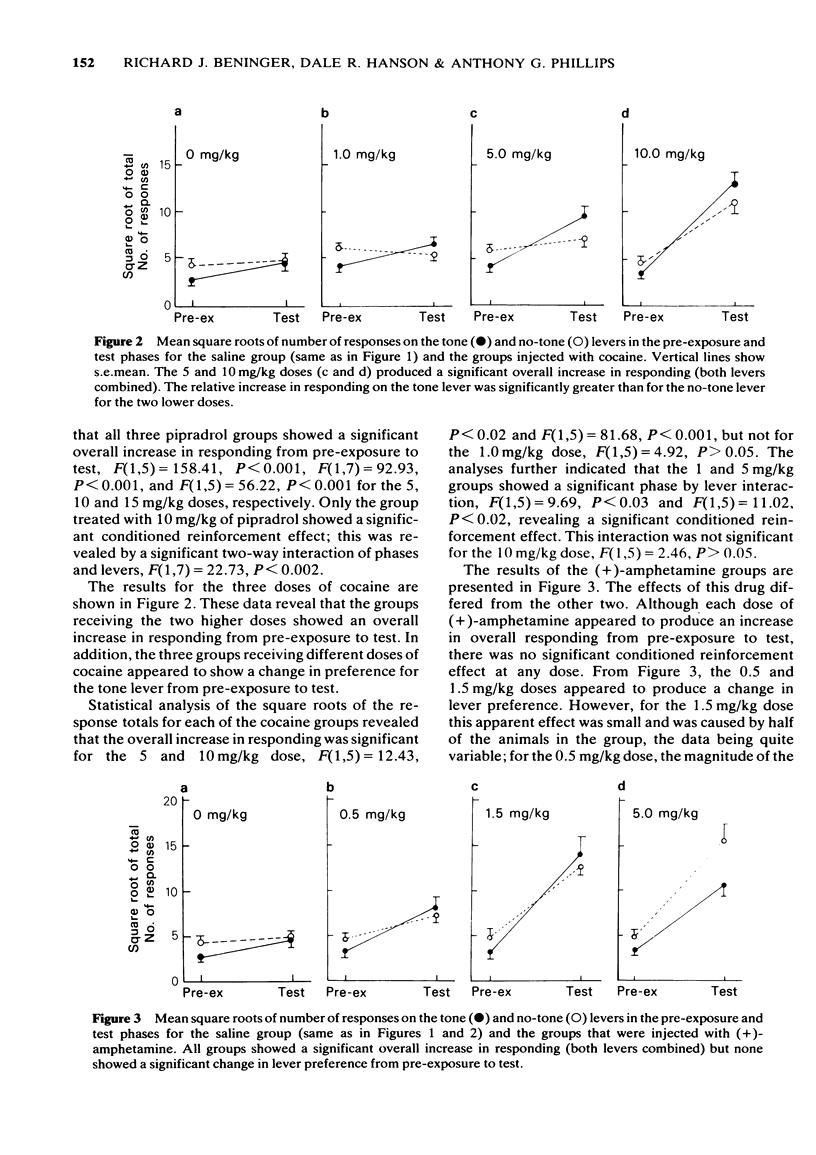
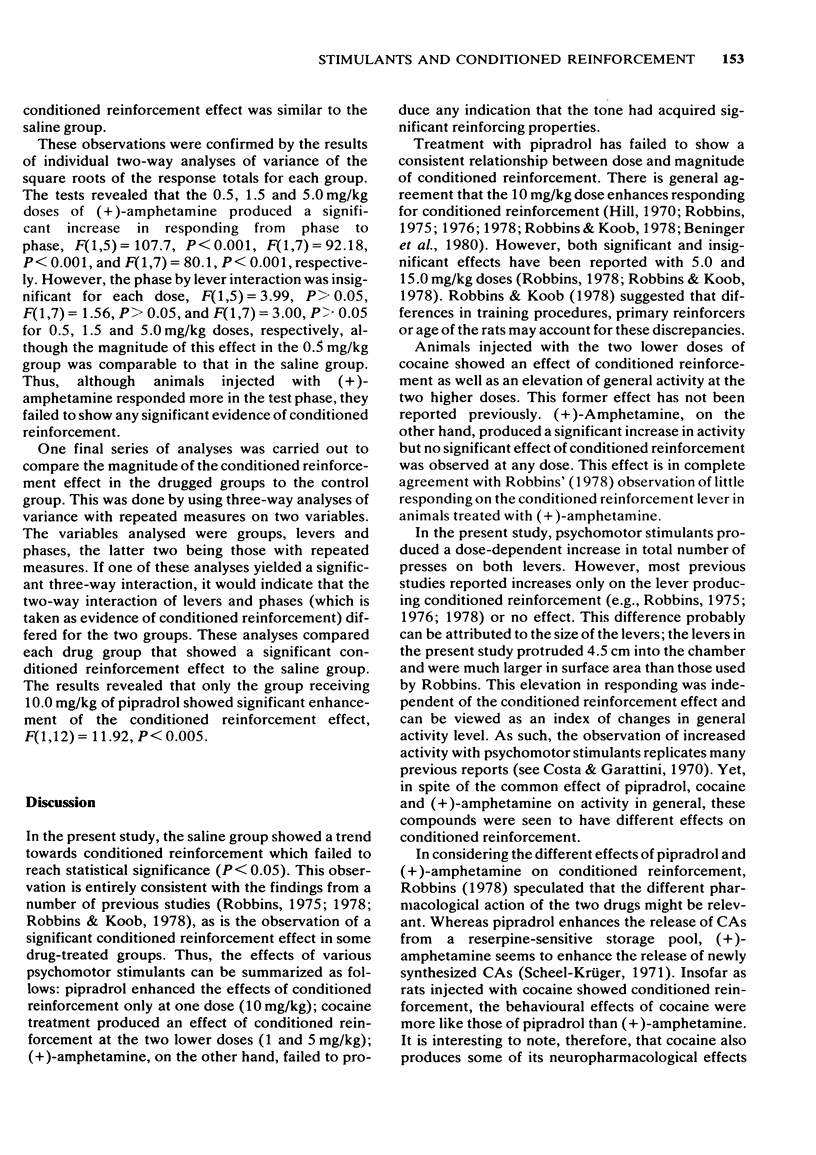
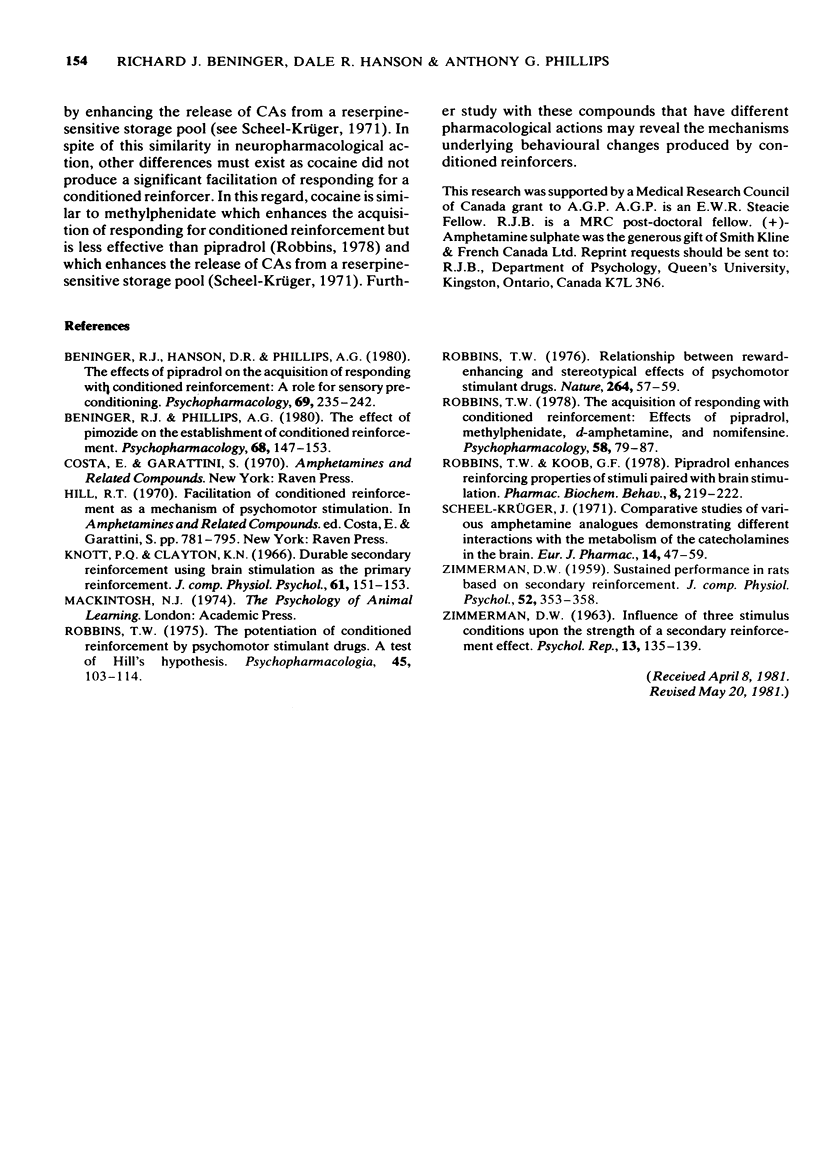
Selected References
These references are in PubMed. This may not be the complete list of references from this article.
- Beninger R. J., Hanson D. R., Phillips A. G. The effects of pipradrol on the acquisitionof responding with conditioned reinforcement: a role for sensory preconditioning. Psychopharmacology (Berl) 1980;69(3):235–242. doi: 10.1007/BF00433088. [DOI] [PubMed] [Google Scholar]
- Beninger R. J., Phillips A. G. The effect of pimozide on the establishment of conditioned reinforcement. Psychopharmacology (Berl) 1980;68(2):147–153. doi: 10.1007/BF00432132. [DOI] [PubMed] [Google Scholar]
- Knott P. D., Clayton K. N. Durable secondary reinforcement using brain stimulation as the primary reinforcer. J Comp Physiol Psychol. 1966 Feb;61(1):151–153. doi: 10.1037/h0022879. [DOI] [PubMed] [Google Scholar]
- Robbins T. W., Koob G. F. Pipradrol enhances reinforcing properties of stimuli paired with brain stimulation. Pharmacol Biochem Behav. 1978 Mar;8(3):219–222. doi: 10.1016/0091-3057(78)90308-8. [DOI] [PubMed] [Google Scholar]
- Robbins T. W. Relationship between reward-enhancing and stereotypical effects of psychomotor stimulant drugs. Nature. 1976 Nov 4;264(5581):57–59. doi: 10.1038/264057a0. [DOI] [PubMed] [Google Scholar]
- Robbins T. W. The acquisition of responding with conditioned reinforcement: effects of pipradrol, methylphenidate, d-amphetamine, and nomifensine. Psychopharmacology (Berl) 1978 Jun 15;58(1):79–87. doi: 10.1007/BF00426794. [DOI] [PubMed] [Google Scholar]
- Scheel-Krüger J. Comparative studies of various amphetamine analogues demonstrating different interactions with the metabolism of the catecholamines in the brain. Eur J Pharmacol. 1971;14(1):47–59. doi: 10.1016/0014-2999(71)90121-x. [DOI] [PubMed] [Google Scholar]
- ZIMMERMAN D. W. Sustained performance in rats based on secondary reinforcement. J Comp Physiol Psychol. 1959 Jun;52(3):353–358. doi: 10.1037/h0045807. [DOI] [PubMed] [Google Scholar]


